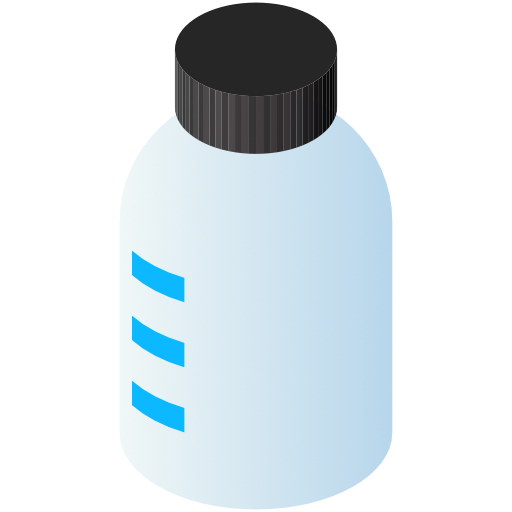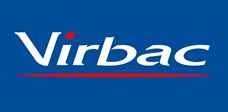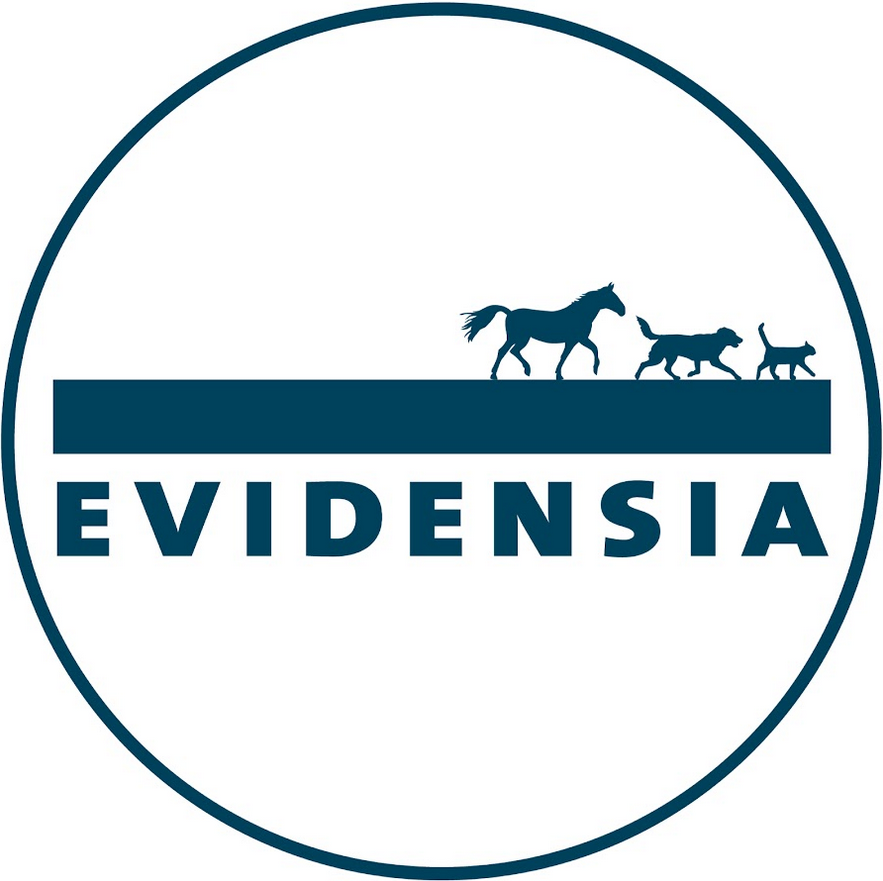Combination therapy
No results were found for your selected species
Senvelgo
Active substance
ATC code
Species
Cats.
Indications
For the treatment of non-insulin required diabetes mellitus in cats.
Important: The EMA has received reports of serious adverse effects following treatment with Senvelgo. Read more: https://www.ema.europa.eu/en/medicines/dhpc/senvelgo
Dose to be administered and administration route
Oral use.
The recommended dosing regimen is 1 mg/kg body weight once daily. The dosing regimen is the same regardless of prior treatment with insulin or another anti-diabetic medicinal product.
When transitioning from insulin, omit the insulin evening dose the day before starting velagliflozin treatment.
The solution should be drawn up using the dosing syringe provided in the package. The syringe fits onto the bottle and has a kg body weight scale, with 0.5 kg increments. The product may be administered either directly into the mouth or with a small amount of food, to ensure the entire dose is taken at once.
The medication should be given at approximately the same time every day.
If a dose is missed, it should be given as soon as possible on the same day. After administration close bottle tightly with the cap. Do not wash the syringe with water.
Adverse reactions
Cats.
|
Very common (>1 animal / 10 animals treated): |
Diarrhoea or loose stool1 Polydipsia or polyuria2 Weight loss3 Dehydration4 |
|
Common (1 to 10 animals / 100 animals treated): |
Diabetic ketoacidosis (DKA)5 Diabetic ketonuria6 Urinary tract infection (UTI)7 Hypersalivation8 |
1 Around half of cats can be expected to display loose stool/diarrhoea during treatment. In the majority of incidences loose stool/diarrhoea last for seven days or less and usually resolve without specific treatment. About 25% of cats can experience loose stool/diarrhoea lasting longer than 28 days. In case diarrhoea persists, alternative treatment for diabetes mellitus should be considered on a case by case basis.
2 Polydipsia or polyuria resolves without additional treatment; may occur as part of the underlying disease or may be enhanced due to the osmotic effect of velagliflozin.
3 Weight loss may occur as part of the underlying disease. An initial weight loss may occur due to the glucosuric effect of velagliflozin.
4 Mild dehydration.
5 Diabetic ketoacidosis (DKA) may be euglycaemic. Stop treatment and initiate insulin therapy. See also sections 3.3 and 3.5.
6 Diabetic ketonuria: stop treatment, undertake further investigations and manage accordingly (e.g., initiate insulin therapy). See also sections 3.3 and 3.5.
7 Urinary tract infection including cystitis caused by infection may occur as part of the underlying disease. The glucosuric effect of velagliflozin may contribute to urinary tract infection. Standard cystitis/urinary tract infection therapy should be initiated.
8 Hypersalivation occurs usually at initial administrations only, occurs immediately following dosing and resolves quickly, without the need for treatment.
Reporting adverse events is important. It allows continuous safety monitoring of a veterinary medicinal product. Reports should be sent, preferably via a veterinarian, to either the marketing authorisation holder or the national competent authority via the national reporting system. See the package leaflet for respective contact details.
Dispensing
POM-V - Prescription Only Medicine – VeterinarianSUMMARY OF PRODUCT CHARACTERISTICS
1. NAME OF THE VETERINARY MEDICINAL PRODUCT
Senvelgo 15 mg/ml oral solution for cats
2. QUALITATIVE AND QUANTITATIVE COMPOSITION
Each ml contains:
Active substance:
Velagliflozin* 15 mg
as velagliflozin L-proline H20 20.1 mg
*sodium-glucose co-transporter 2 (SGLT-2) inhibitor
3. PHARMACEUTICAL FORM
Oral solution.
Clear colourless to slightly yellow to slightly brown solution.
4. CLINICAL PARTICULARS
4.1 Target species
Cat
4.2 Indications for use, specifying the target species
For the treatment of diabetes mellitus in cats
4.3 Contraindications
Do not use in cats with evidence of diabetic ketoacidosis, diabetic ketonuria, or severe dehydration requiring i.v. fluid supplementation (see also section 4.5 special precautions for use in animals).
Do not use in cases of hypersensitivity to the active substance or to any of the excipients.
4.4 Special warnings for each target species
The safety and efficacy of a combined treatment with insulin or other blood glucose lowering treatments (excluding diet) and velagliflozin in cats has not been investigated. Due to the mode of action of insulin, there is an increased risk for hypoglycaemia, therefore combined treatment is not recommended. Concomitant therapy with other antidiabetics has not been evaluated and may increase the risk for symptomatic hypoglycaemia.
In clinical trials, hypoglycaemia (defined as serum blood glucose levels below 3.5 mmol/l) was sporadically observed, although was asymptomatic and did not demonstrate a causal relationship to the product. Based on the selectivity of velagliflozin for the SGLT-2, there is no risk for symptomatic hypoglycaemia (glucose reabsorption will be balanced by the SGLT-1).
Based on the mode of action it is expected that cats being treated with SGLT-2 inhibitors will exhibit glucosuria. Therefore, the degree of glucosuria is not a reliable diagnostic indicator for monitoring diabetic control or diabetic remission. As glucosuria may persist for 2-3 days after discontinuation of the veterinary medicinal product, blood glucose levels should be monitored to determine when diabetic treatment needs to be resumed.
4.5 Special precautions for use
Special precautions for use in animals:
The following conditions should be resolved prior to treatment start: dehydration, suspected or confirmed diabetic ketoacidosis, clinical pancreatitis, chronic diarrhoea, cachexia.
Prior to initiating treatment, screening for ketoacidosis should be performed. Clinical signs such as dehydration, lethargy, anorexia (inappetence), acute vomiting, cachexia alongside hyperglycaemia and presence of serum or urine ketone bodies may indicate that the cat has DKA or may be at higher risk of developing DKA. Insulin pre-treated cats may be at higher risk for DKA (see below).
In field studies conducted with the veterinary medicinal product 14/277 (5.1%) of the cats that had previously not received any treatment for DM developed clinical DKA whereas 8/66 (12.1%) of cats that had previously been treated with insulin developed clinical DKA. The likelihood of pancreatic beta-cell loss and insulin-dependency may be higher in insulin pre-treated cats. As a result, the withdrawal of the insulin before the start of treatment with the product may lead to a metabolic destabilisation and initiate ketogenesis. This information should be taken into account when considering transferring a cat from insulin treatment to treatment with this veterinary medicinal product.
In line with DM treatment guidelines, cats should also be evaluated for concurrent disease including pancreatitis, infectious disease, urinary tract infection, neoplasia, and acromegaly as these conditions may increase the risk of developing ketoacidosis.
Cats may also require temporary discontinuation of therapy in clinical situations known to predispose to ketoacidosis (e.g. prolonged fasting due to acute illness, around surgery).
Cats considered to be at risk of developing diabetic ketoacidosis need close monitoring after initiation of treatment. The risk of developing diabetic ketoacidosis significantly decreases after the first two weeks of treatment, but DKA may occur at any time (see monitoring/precautions below).
Diabetic ketoacidosis (DKA) and ketonuria: Discontinue treatment immediately in the event of confirmed or suspected DKA or diabetic ketonuria and investigate accordingly. Due to the mode of action of SGLT-2 inhibitors, DKA may present without hyperglycaemia (known as euglycaemic DKA). A check for ketone bodies is therefore required prior to use and/ or whenever DKA is suspected; treatment with Senvelgo should not be initiated whilst urine ketone bodies are detected.
Diagnosis of euglycaemic DKA can be based on the presence of ketone bodies and euglycaemia alongside clinical signs such as decreased appetite, acute vomiting, lethargy and dehydration. The presence of ketone bodies should prompt further evaluation of the cat; in cases of clinical DKA, it is imperative to initiate treatment in accordance with standard DKA treatment protocols. This includes the prompt initiation of insulin therapy, administration of dextrose or other carbohydrate source as well as appropriate nutritional support. Checking for ketones is required at the initiation of therapy and every 1-3 days for the first two weeks, as well as whenever the cat is showing clinical signs of illness.
Delay in diagnosis and treatment of diabetic ketoacidosis and euglycemic diabetic ketoacidosis may result in increased morbidity and mortality.
The safety and efficacy of the product has not been established in cats younger than 9 months and 4 years, respectively.
The safety and efficacy of the product has not been fully evaluated in severe cases of renal/liver/cardiac disease. Use only according to the benefit/risk assessment by the responsible veterinarian.
Remission
Remission of diabetes mellitus in cats is a complex phenomenon, which can be influenced by multiple factors in individual patients, such as glycaemic control, diet, age, weight, and/or genetics. Due to velagliflozin’s mode of action it may be difficult to identify cats which are in remission, since they would not be expected to have hypoglycaemic events (unlike therapy with insulin). Consideration could be given to either continuing treatment with velagliflozin indefinitely or withdrawing treatment and closely monitoring glycaemic control and for return of clinical signs. If the patient relapses then velagliflozin treatment can be restarted.
Routine monitoring recommendations
Cats with diabetes mellitus and treated with the veterinary medicinal product should be routinely monitored according to standard DM treatment guidelines. In addition, due to the mode of action of velagliflozin, routine monitoring should include urinalysis (ketonuria, UTI), hydration status (osmotic diuresis) and body weight (unintended body weight loss due to persistent glucosuria).
Whenever clinical signs of DKA occur the cat should be evaluated for the presence of ketone bodies (e.g. ketonuria) indicating DKA or comorbidities causing insulin resistance. If the cat’s clinical condition declines and/or blood glucose or fructosamine values worsen after initial improvement, additional diagnostics or alternative therapies may be required. Evaluation of haematology, serum chemistry, urinalysis and hydration status is recommended.
Due to their mode of action, SGLT-2 inhibitors may cause a mild increase in serum creatinine, BUN, phosphorus, and sodium within weeks of starting therapy, followed by a stabilisation of values. Routine evaluation of renal function, body weight and hydration status in patients with renal disease is recommended.
Special precautions to be taken by the person administering the veterinary medicinal product to animals:
Accidental exposure to the product may cause increased urination, and symptoms of low blood pressure or low blood sugar, such as dizziness. Take care to avoid children accessing an unattended filled syringe.
Do not leave the syringe unattended. Ensure that the food bowl is washed after the cat has eaten food which was mixed with the product.
If skin contact occurs, avoid hand-to-mouth contact, and wash hands immediately. If symptoms occur, seek medical advice.
The product may cause slight irritation to the eyes.
Avoid contact with the eyes.
If contact with the eyes occurs, rinse immediately with water, and seek medical advice if symptoms persist.
The product includes propylene glycol, which may cause hypersensitivity reactions. People with known hypersensitivity to this substance should avoid contact with the product.
As no data are available to conclude that exposure to velagliflozin presents a risk to pregnant and/or breastfeeding women, they should consider wearing gloves in addition to standard hygiene practices.
4.6 Adverse reactions (frequency and seriousness)
|
Very common (>1 animal / 10 animals treated): |
Around half of cats can be expected to display loose stool/diarrhoea during treatment. In the majority of incidences loose stool/diarrhoea last for seven days or less and usually resolve without specific treatment. About 25% of cats can experience loose stool/diarrhoea lasting longer than 28 days. In case diarrhoea persists, alternative treatment for diabetes mellitus should be considered on a case by case basis. Polydipsia / polyuria: resolves without additional treatment; may occur as part of the underlying disease or may be enhanced due to the osmotic effect of velagliflozin. Weight loss: may occur as part of the underlying disease. An initial weight loss may occur due to the glucosuric effect of velagliflozin. Mild dehydration |
|
Common |
Diabetic ketoacidosis (DKA): may be euglycaemic. Stop treatment and initiate insulin therapy. See also sections 4.3 and 4.5. |
|
(1 to 10 animals / 100 animals treated): |
Diabetic ketonuria: stop treatment, undertake further investigations and manage accordingly (e.g. initiate insulin therapy). See also sections 4.3 and 4.5. Urinary tract infection including cystitis caused by infection: may occur as part of the underlying disease. The glucosuric effect of velagliflozin may contribute to urinary tract infection. Standard cystitis/urinary tract infection therapy should be initiated. Hypersalivation: usually at initial administrations only, occurs immediately following dosing and resolves quickly, without the need for treatment. |
4.7 Use during pregnancy, lactation or lay
The safety of the veterinary medicinal product has not been established during pregnancy and lactation. Use is not recommended during pregnancy and lactation.
4.8 Interaction with other medicinal products and other forms of interaction
Drug-drug interactions have not been investigated in vivo. The potential of drug-drug interactions is considered negligible as velagliflozin showed a low level of induction potential for liver microsomal cytochrome P450 (CYP450) enzymes in vitro. Concomitant treatment with diuretics has not been evaluated. Due to the pharmacodynamic effect, which may induce mild osmotic diuresis, concomitant treatment with diuretics may have a potential synergistic effect.
4.9 Amount(s) to be administered and administration route
The recommended dosing regimen is 1 mg/kg body weight once daily. The dosing regimen is the same regardless of prior treatment with insulin or another anti-diabetic medicinal product.
When transitioning from insulin, omit the insulin evening dose the day before starting velagliflozin treatment.
The solution should be drawn up using the dosing syringe provided in the package. The syringe fits onto the bottle and has a kg body weight scale, with 0.5 kg increments. The product may be administered either directly into the mouth or with a small amount of food, to ensure the entire dose is taken at once.
The medication should be given at approximately the same time every day.
If a dose is missed, it should be given as soon as possible on the same day. After administration close bottle tightly with the cap. Do not wash the syringe with water.
4.10 Overdose (symptoms, emergency procedures, antidotes), if necessary
In a 90-day tolerance study evaluating repeated doses of 1 mg/kg, 3 mg/kg and 5 mg/kg velagliflozin in healthy cats, a dose dependent softening of stool was observed.
In a 180-day tolerance study evaluating repeated doses of 1 mg/kg, 3 mg/kg and 5 mg/kg of the product in healthy 9-month-old cats, the following were observed. Reduced weight gain was observed for both male and female cats receiving 5 mg/kg, and also in female cats receiving 1 mg/kg and 3 mg/kg of the product. Softer stools were observed in cats administered 5 mg/kg of the product. An increase of mean cholesterol values and a transient increase of mean triglyceride values were noted in cats administered 1 mg/kg, 3 mg/kg and 5 mg/kg of the product. Both remained within the respective reference range of historical controls in healthy animals and were of minor clinical relevance. Elevated reticulocyte counts, in excess of the normal reference range, were noted in cats administered 5 mg/kg of the product, however this was not associated with any other haematological or clinical signs of anaemia. Elevations in serum calcium and magnesium levels were observed in cats administered 3 mg/kg and 5 mg/kg of the product, with magnesium values slightly exceeding the reference range. There were no associated clinical signs.
4.11 Withdrawal period(s) Not applicable.
5. PHARMACOLOGICAL PROPERTIES
Pharmacotherapeutic group:
ATC Vet Code: QA10BK90 (sodium-glucose co-transporter 2 (SGLT-2) inhibitors)
5.1 Pharmacodynamic properties
Velagliflozin is a selective inhibitor of the sodium-glucose co-transporter 2 (SGLT-2) which is predominantly expressed in the kidney. Velagliflozin also has a minor inhibitory effect on the SGLT-1 which is predominantly expressed in the small intestine, but also expressed at a lower level in the kidney. SGLT-2 is the primary transporter for the reabsorption of glucose from the urine. The inhibition of the SGLT-2 leads to glucose elimination in the urine and results in a decrease in elevated blood glucose levels in diabetic patients. This decrease is usually observed within 7 days after start of treatment. A low level of glucose will continue to be resorbed via incomplete inhibition of the SGLT-1 which prevents clinical hypoglycaemia. This minor inhibitory action on SGLT-1 can also contribute to a dose-dependent softening of stool and loose stool/diarrhoea due to the expression of SGLT-1 in the small intestine.
In a European clinical field trial, the safety and efficacy of 1 mg/kg once daily oral velagliflozin in diabetic cats was evaluated and compared to twice daily veterinary licensed porcine insulin therapy (individual dose adjustment) over 91 days. The efficacy assessment was performed after 45 treatment days and assessed if an animal showed a combined improvement in at least one clinical sign related to diabetes (e.g. water uptake, urination volume and frequency, diabetic polyneuropathy and appetite) and an improvement in at least one glycaemic laboratory parameter (mean blood glucose of the blood glucose curve ≤250 mg/dl [approximately 14 mmol/l], min blood glucose ≤160 mg/dl [approximately 9 mmol/l]
and serum fructosamine ≤450 µmol/l). The study confirmed that once daily oral administration of velagliflozin is non-inferior to twice daily insulin injections.
In a US clinical field trial, the safety and efficacy of 1 mg/kg/day velagliflozin was evaluated in newly diagnosed diabetic cats as well as cats previously treated with insulin or other anti-diabetic medications. The study design utilised baseline control with all enrolled cats receiving velagliflozin. In this trial, 88.4% of the cats treated with velagliflozin and included in the efficacy analysis met the requirement for treatment success on day 30.
This efficacy assessment was performed after 30 days of treatment and cats determined eligible to continue into the extended use phase could be treated for up to 180 days. The efficacy assessment at Day 30 was judged by a combination of clinical and laboratory parameters related to diabetes mellitus.
The composite variable “treatment success” was comprised of an improvement in at least one clinical sign related to diabetes mellitus (polyuria, polydipsia, unintended weight loss, polyphagia, or diabetic neuropathy) and improvement in at least one glycaemic variable in comparison to the screening visit. The glycaemic variable could be either the mean of the blood glucose curve, which had to be ≤300 mg/dl (approximately 17 mmol/l) and below the fasted screening visit blood glucose, or serum fructosamine, which had to be ≤450 μmol/l and below the screening visit fructosamine value.
Most owners (67%) reported very good or excellent quality of life (QoL) in their cats by the Day 30 visit. In addition, by the Day 30 visit, 87% of cats were reported as having good, very good or excellent overall diabetic control by the Study Veterinarians.
5.2 Pharmacokinetic particulars
Absorption:
After oral administration of velagliflozin to fasted healthy cats, plasma-concentrationtime curves are characterised by rapid absorption with maximum plasma concentrations (Cmax) achieved after 0.6–1 hour (tmax). The mean Cmax ranged from 1293 to 2161 ng/ml and the mean areas under the curve within 24 hours (AUC0-24h) ranged from 6944 to 11035 h*ng/ml.
After oral administration of velagliflozin to fed healthy cats plasma-concentration-time curves are characterised by slightly delayed absorption with Cmax achieved after 1 - 3.67 hours (tmax). The mean Cmax ranged from 316 to 846 ng/ml and the mean areas under the curve within 24 hours (AUC0-24h) ranged from 2786 to 7142 h*ng/ml.
In summary, although fasted cats showed a higher Cmax and shorter tmax, resulting in a higher exposure (AUC0-24h) compared to cats in fed state, this is not considered to be of clinical relevance.
After repeat daily oral administration of 1, 3 and 5 mg/kg velagliflozin to healthy cats over six months, a slight increase of exposure (range: 1.3- to 1.9-fold) was observed. In addition, a tendency for a less than dose-proportional increase of exposure (AUC) and Cmax was observed for all dose levels.
Distribution:
An in vitro study using cat plasma showed high (91.3% to 93.7%) plasma protein binding.
An in vitro study using cat whole blood investigating partitioning of velagliflozin into red blood cells showed a blood-to-plasma ratio of 0.84.
Pharmacokinetics after intravenous administration in cats showed a volume of distribution similar to that of total body water, indicating distribution of velagliflozin into tissue.
Metabolism:
The primary metabolic pathways observed in cats after oral administration of velagliflozin were oxidation, a combination of oxidation and dehydrogenation, and sulphate conjugation. Velagliflozin showed an absolute bioavailability of 96% in healthy fasted cats after oral administration.
Elimination:
After oral administration (fed/fasted) mean half-life (t1/2) ranged from 4.49 to 6.44 hours.
After oral administration to cats, velagliflozin was primarily excreted unchanged in faeces. Only minor renal excretion occurred (approximately 4%).
6. PHARMACEUTICAL PARTICULARS
6.1 List of excipients
Ethanol, anhydrous
Propylene glycol
Citric acid monohydrate
Sodium hydroxide
Honey flavour
Water, purified
6.2 Major Incompatibilities
None known.
6.3 Shelf life
Shelf life of the veterinary medicinal product as packaged for sale: 3 years.
Shelf life after first opening the immediate packaging: 6 months.
6.4 Special precautions for storage
This veterinary medicinal product does not require any special storage conditions.
6.5 Nature and composition of immediate packaging
Polyethylene bottle containing 30 mL with a polyethylene plug-in and a child resistant closure.
Each bottle is packed in a cardboard box equipped with a dosing syringe.
6.6 Special precautions for the disposal of unused veterinary medicinal product or waste materials derived from the use of such products
Any unused veterinary medicinal product or waste materials derived from such veterinary medicinal products should be disposed of in accordance with local requirements.
7. MARKETING AUTHORISATION HOLDER
Boehringer Ingelheim Animal Health UK Ltd
Ellesfield Avenue
Bracknell
Berkshire
RG12 8YS
8. MARKETING AUTHORISATION NUMBER
Vm 08327/5004
9. DATE OF FIRST AUTHORISATION
01 August 2023
10. DATE OF REVISION OF THE TEXT
August 2023
11. CLASSIFICATION OF VETERINARY MEDICINAL PRODUCTS
Veterinary medicinal product subject to prescription.
Approved 01 August 2023


| Art. Nr. | 08327/5004 |
|---|---|
| EAN | 4064951006777 |
 TRUSTED SOURCE
TRUSTED SOURCE








